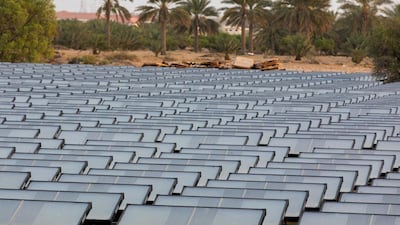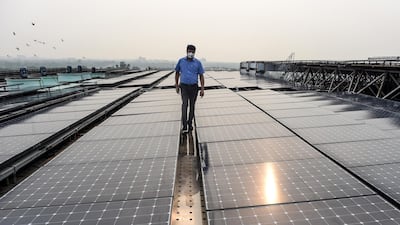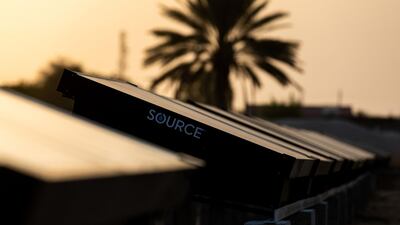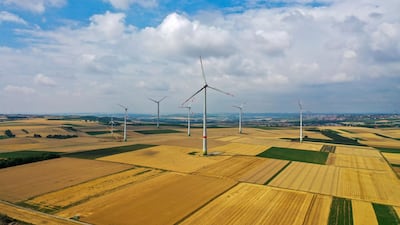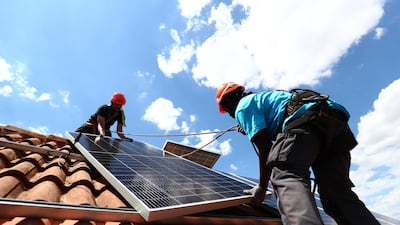In the recent Netflix original documentary, A Life on Our Planet, Sir David Attenborough gives audiences a panoramic view of his relationship with Mother Earth over the past seven decades. He presents alarming facts about our ecological footprint and laments, that "the natural world is fading [and this] will lead to our destruction".
But the 94-year old British naturalist also has a message of hope, reminding us that Earth has its own regulatory system which, if we use well, can help us tackle environmental erosion and find sustainable solutions for our everyday needs.
“The living world is essentially solar powered,” he asserts, urging us to shift away from fossil fuels and look towards the sun.
For its part, the UAE, while a major oil producer, has made significant strides towards solar power.
The country is firmly on track to achieve its target of increasing the renewable share of its energy mix to 50 per cent by 2050. The percentage of clean energy in Dubai's mix alone has grown from zero to nearly 10 per cent in less than a decade, and the UAE's sizeable investments have lowered solar energy costs by 75 per cent in the past five years.
When the 2 gigawatt Al Dhafra solar project comes online in 2022, it will be the world's largest, and will eliminate 2.4 million metric tonnes of CO2 emissions annually, equivalent to removing almost half a million cars from our roads. What's more, energy from Al Dhafra will be three times cheaper than the electricity tariff from a new natural gas-based plant.
With solar energy solutions well under way, the time is now right for the UAE to embark on a similar transition in a new sector: water.
Clean water is the only resource we cannot live without, and the UAE is one of the top 10 countries with "extremely high baseline water stress", according to the World Resources Institute. This stress will only become more acute as the climate continues to change.
Some non-urban and remote communities already struggle with access to safe drinking water and are reliant on supplies of bottled or trucked water – sources that offer near-term relief but fall far short in accessibility, resilience and sustainability.
There is no doubt we need innovative, climate-proof water solutions that can produce reliable drinking water close to the point of demand.
And just as we look to the sky to source our energy, the blue above us also holds the answer to our water needs.
There are an estimated 13 trillion litres of water hovering in the air in the form of atmospheric humidity, equivalent to 10 per cent of the world’s freshwater lakes. This humidity renews itself each day, making it a regenerative and sustainable source of water.
Today, we have technologies that use solar power to extract this water vapor from the air and convert it into clean, mineralised drinking water.
The adoption of this technology would give individuals, families and communities independent, renewable and regenerative sources of drinking water at a fraction of the cost of bottled water and without the plastic waste footprint. Solar water production also can be deployed to sustainably deliver pure water for irrigation in greenhouse farms while regulating humidity levels within those greenhouses to ensure optimal fruit and vegetable yields.
The UAE government has taken bold policy steps to shift towards renewable energy. Now, that same boldness is required to transition to renewable water sources, including air to water.
In the A Life on Our Planet documentary, Mr Attenborough concludes his witness statement by reminding us that for humanity to survive, we must learn to live in harmony with nature.
We have already started that journey by harnessing the powers of renewable energy. The next step is to tap into renewable water.
Vahid Fotuhi is the Mena vice president of business development at Source Global
